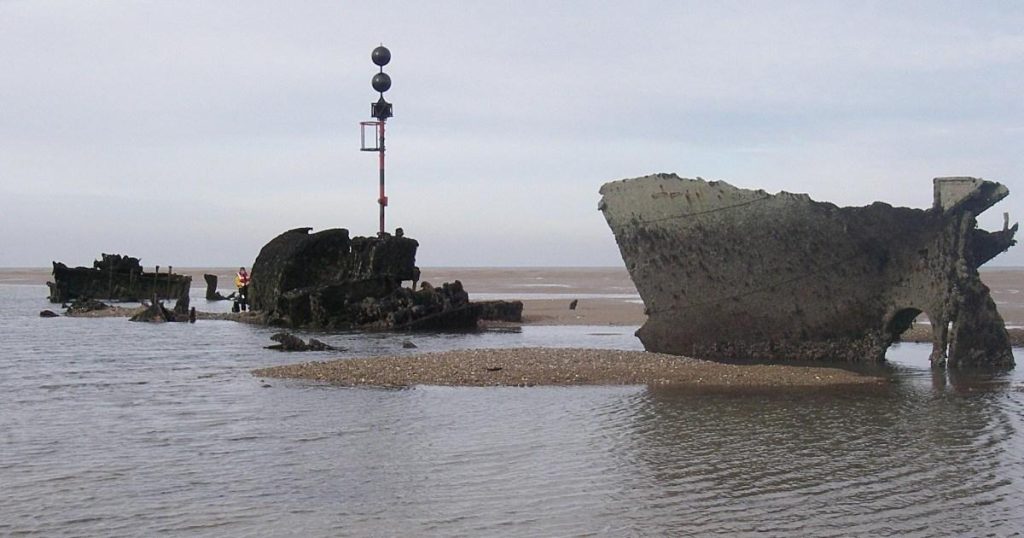A Seaside Tragedy: The Unforeseen Demise of Raymond Mills
Raymond Mills, a 74-year-old retiree from Milton Keynes, embarked on a seemingly idyllic family holiday to Norfolk with his wife Jacqueline and their three grandchildren. A meticulous planner, Mr. Mills had promised his grandchildren a visit to the SS Vina, a shipwreck visible at low tide off Brancaster beach. He diligently researched tide times, aware of the limited window for viewing the wreck, which lay approximately 800 meters offshore. This careful preparation reflected Mr. Mills’ character, a safety-conscious individual who prioritized the well-being of himself and others. The family’s vacation took a devastating turn on August 17, 2024, when Mr. Mills ventured out to the wreck with one of his grandchildren.
The SS Vina, a casualty of RAF target practice in 1944, rests on Wreck Sands, an area notorious for strong currents. While attempting to reach the wreck, Mr. Mills encountered these treacherous currents and was tragically swept underwater. His granddaughter managed to return safely to shore and raised the alarm. Bystanders and subsequently Mrs. Mills contacted emergency services, initiating a frantic search for the missing grandfather. The HM Coastguard responded swiftly, and within an hour, Mr. Mills was located in the water. He was airlifted to Norwich Airport for transfer to an ambulance, but despite rescue efforts, he was pronounced dead upon arrival.
The inquest into Mr. Mills’ death, held at Norfolk Coroner’s Court, revealed a confluence of factors that contributed to the tragedy. While Mr. Mills could swim, he was not a strong swimmer and was unfamiliar with the specific challenges posed by Brancaster beach and its surrounding waters. A post-mortem examination conducted by consultant histopathologist Dr. Xenia Tyler identified atherosclerosis, a build-up of plaque in the arteries, in Mr. Mills’ coronary artery. Although not considered severe, Dr. Tyler suggested that exposure to the cold water could have triggered an arterial spasm, leading to a fatal cardiac dysrhythmia. The coroner, Samantha Goward, concluded that the combination of the cold water’s impact on Mr. Mills’ heart and the subsequent submersion ultimately resulted in his death, with drowning as a contributing factor.
The tragic incident has ignited a debate about safety measures at Brancaster beach, which is owned by the National Trust. Mr. Mills’ family has called for increased signage highlighting the dangers of the wreck and the strong currents. They also advocate for the removal of the SS Vina itself, arguing that its presence constitutes an unnecessary and potentially fatal attraction. Mrs. Mills, devastated by the loss of her husband of nearly 49 years, expressed her belief that the wreck’s allure contributed to the tragedy and should be eliminated to prevent future incidents. The National Trust maintains that warning signs are in place, but the Mills family disputes this, claiming they only observed a single sign unrelated to water safety on the day of the accident.
The National Trust acknowledges the absence of lifeguards at Brancaster beach and the rapid tidal changes that can create hazardous conditions, including the challenges posed by the SS Vina wreck and other wartime remnants. This acknowledgment, however, has not assuaged the family’s grief or their conviction that more proactive measures are required to protect visitors. Mrs. Mills poignantly described her husband as her “rock,” a skilled engineer and devoted grandfather. His sudden and unexpected death has left a void in their lives, highlighting the devastating consequences of underestimated risks in seemingly benign environments.
The inquest serves as a stark reminder of the hidden dangers that can lurk beneath the surface of popular destinations. While the allure of exploring shipwrecks and other underwater attractions is undeniable, it is crucial for individuals and families to thoroughly assess potential risks, heed warning signs, and prioritize safety above all else. The tragic loss of Raymond Mills underscores the importance of vigilance, especially in unfamiliar environments, and the necessity of constant awareness of the power of nature, even in seemingly tranquil settings. The call for improved safety measures at Brancaster beach serves as a poignant testament to the need for ongoing efforts to protect those who seek to enjoy the beauty and wonder of coastal areas.











